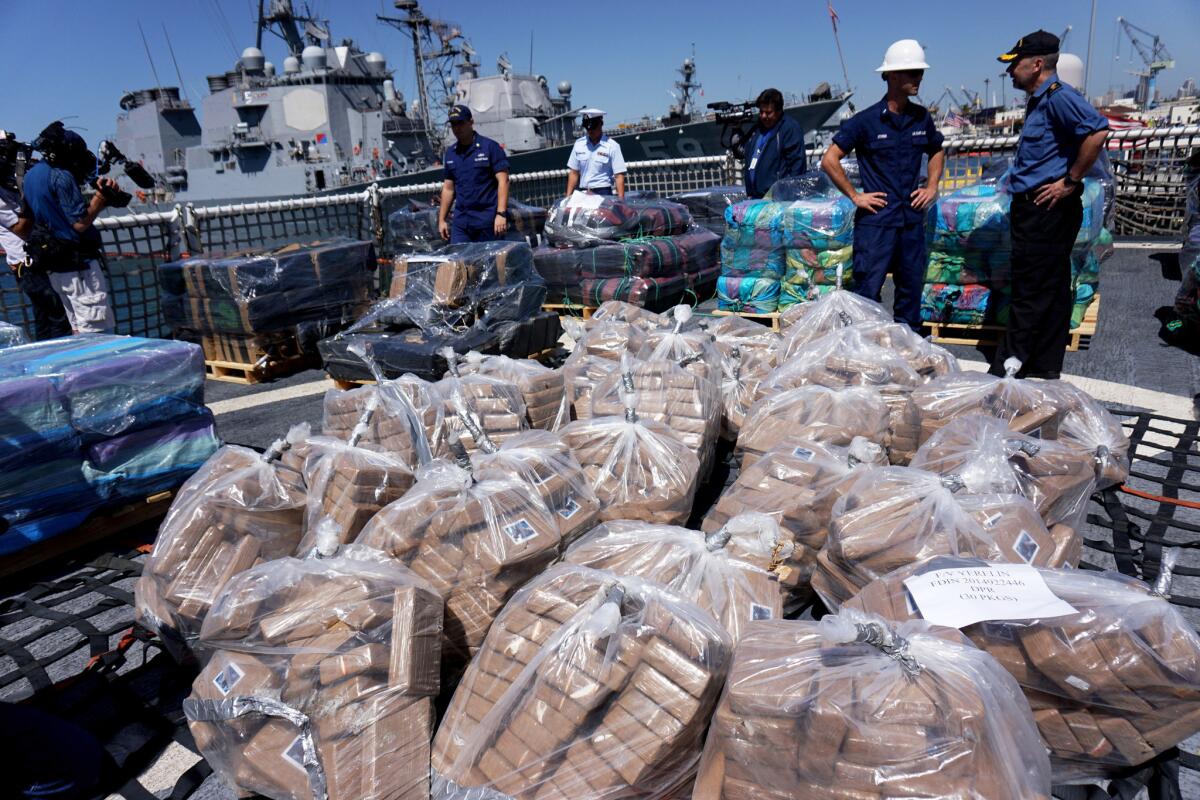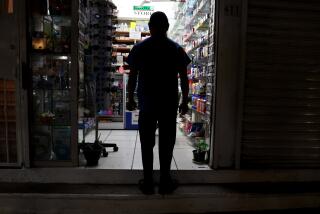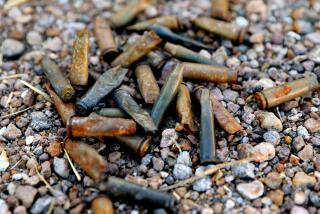Cocaine trade caught in disrupted global supply chains

- Share via
The COVID-19 pandemic has hit cocaine traffickers, a United Nations report has found, as global lockdowns have brought transport to a near-standstill and disrupted a business that relies on legal trade to camouflage its activities and on individuals being able to distribute drugs to consumers.
“The measures implemented by governments to counter the pandemic have thus inevitably affected all aspects of the illegal drug markets, from the production and trafficking of drugs to their consumption,” according to the report from the U.N. Office on Drugs and Crime.
Anticipating a slowdown in trade from COVID-19, drug traffickers had increased shipments just ahead of the imposition of lockdowns, only to be trounced due to a number of seizures.
In the first three months of this year, the U.N. office helped confiscate 17.5 tons of cocaine bound for Europe coming from South America. In Rotterdam, Netherlands, confiscations shot up from 4.1 tons in the first quarter of last year to 6.6 tons in the same period this year.
In Antwerp, Belgium, in April, an unusually big, 5-ton drug cargo was found hidden in a container that normally contains squid. Weeks earlier, in the Peruvian port of El Callao, police caught a shipment of cocaine hidden in surgical masks headed for China.
But after lockdowns and restrictions were imposed in Latin American countries and the global maritime trade eased, “we saw a very substantive drop in the seizures,” which could indicate fewer shipments, said Bob Van den Berghe with the Container Control Program at the U.N. Office on Drugs and Crime.
“It has become more difficult for criminal organizations to get cocaine into the maritime ports because borders are closed, roads are closed; you have police officers everywhere,” he said.
“The narcos play a numbers game. The drug trafficking organizations are happy to accept a 15% to 20% loss ratio, but with fewer containers to check in ports, the odds are stacked further against them than normal,” said Jeremy McDermott, co-director of InSight Crime, a Medellin, Colombia-based think tank that investigates organized crime.
Bolivia, Colombia and Peru are the only countries that produce coca, cocaine’s raw material, and the U.N. said there were “indications” of a reduction in the flow of cocaine from source countries.
For the European market, Brazilian gangs typically ship cocaine via West Africa, using Guinea-Bissau, Guinea and Senegal as entry points, experts say. Then Tuareg and Arab syndicates tussle over drug routes across the Sahel and the Sahara. But the U.N. said transit spots such as Niger had reported “a cease” in drug trafficking.
“Drug markets are changing around the world as the dramatic reduction in global trade means that there are fewer opportunities for moving products through supply chains,” said Robert Muggah at Igarapé Institute, a security think tank in Rio de Janeiro.
The drop in supply and demand has intensified competition between cartels. As it becomes harder to get the drugs through more traditional ports of entry, traffickers are switching to parallel routes, loading them on submarines or speedboats or offloading on beaches in Central America.
New U.S. operations against drug traffickers had increased the pressure too, said Ricardo Márquez Blas, a Mexican security consultant.
“That means the drugs need to go overland, if you block sea and air routes,” he said. “This will strengthen Mexican cartels even more and will increase their power over Colombian cartels because they control the last stretch [of the supply chain] into the U.S. market.” Mexican cartels would also fight each other “for access routes, distribution and trade on routes into the U.S. This will lead to more intense disputes and more deaths,” he added.
In the “extremely competitive and violent” drug market, “those who improvise either end up in prison or are killed. The COVID-19 emergency can only benefit the strongest and best-equipped operators and be a disaster for the weakest,” said Antonio Mazzitelli, regional director for West and Central Africa at the U.N. drugs agency in Vienna.
The coronavirus squeeze has added to the global glut of cocaine. Coca crop output in Colombia has jumped since gangs took control of the business after a 2016 peace deal with the rebel group known as FARC, which funded operations through the drug trade. In Peru, the national drug control agency reported a 46% drop in the price of coca leaf from January to April this year.
“There are literally tons of drugs waiting for a berth, and the coronavirus has accentuated this,” said McDermott at InSight Crime.
On the demand side, however, dealers are doing well. The wholesale price for a kilo of cocaine coming through Rotterdam went up from about $27,000 a kilo late last year to $35,000 a kilo now, according to McDermott.
“People are prepared to pay more money because it’s much harder to get your drugs than before when you could go out and meet your dealer. Now you have to use the drug delivery networks or the dark web,” he said. “For the retail drug dealer it’s a dream scenario. For the drug producer it’s frustrating.”
The lockdown has had other consequences too. Alleged cocaine trafficker Edwin Lobo Dorado was caught last month by Bolivian security forces checking drivers’ papers as part of the strict government-imposed quarantines. Dorado, who authorities said had been wanted in the Latin American country for years after a 2008 conviction, is now in custody.
Additional reporting by Neil Munshi in Antwerp
© The Financial Times Ltd. 2020. All rights reserved. FT and Financial Times are trademarks of the Financial Times Ltd. Not to be redistributed, copied or modified in any way.
More to Read
Sign up for Essential California
The most important California stories and recommendations in your inbox every morning.
You may occasionally receive promotional content from the Los Angeles Times.










